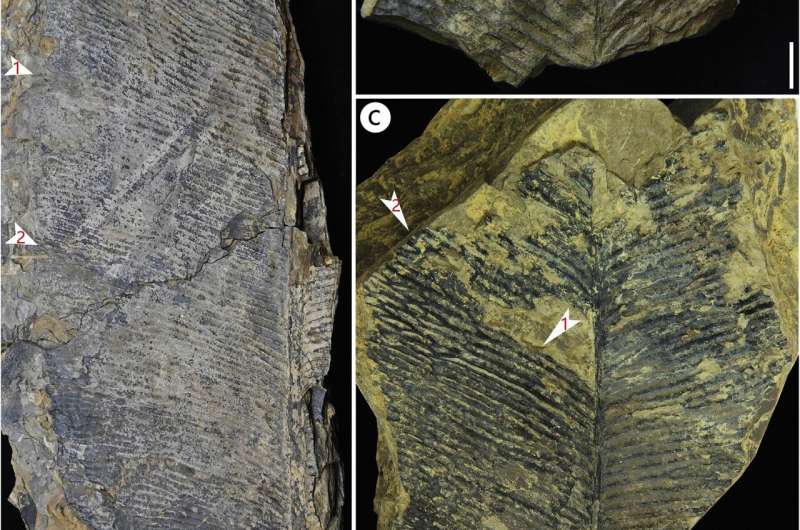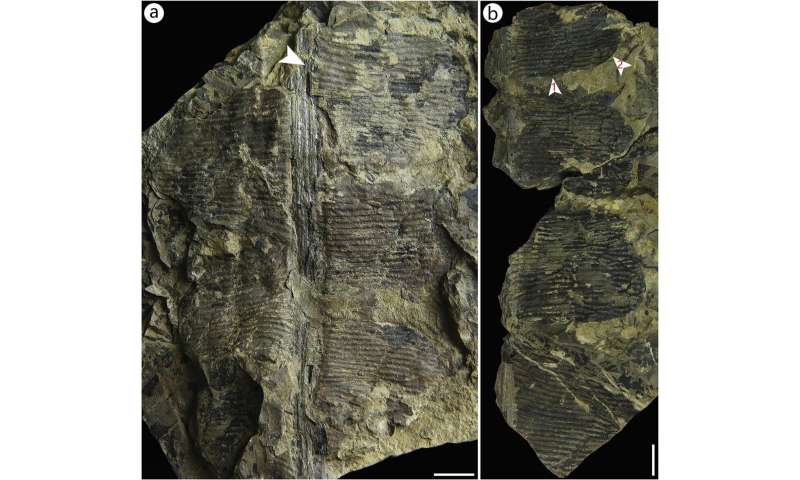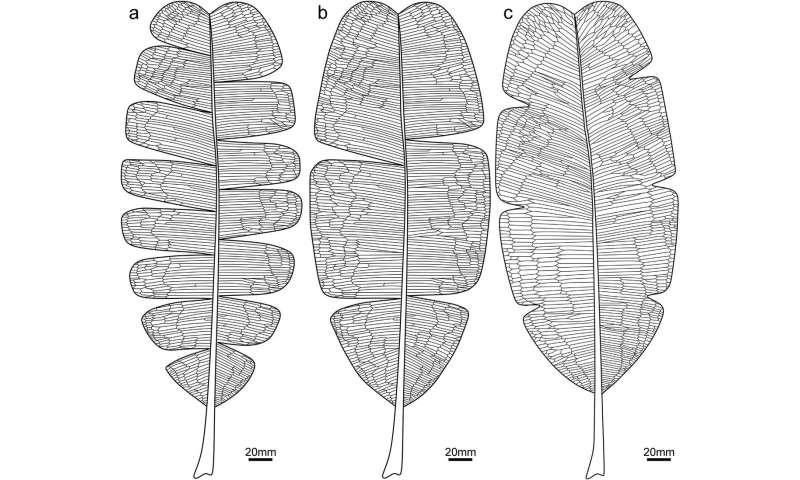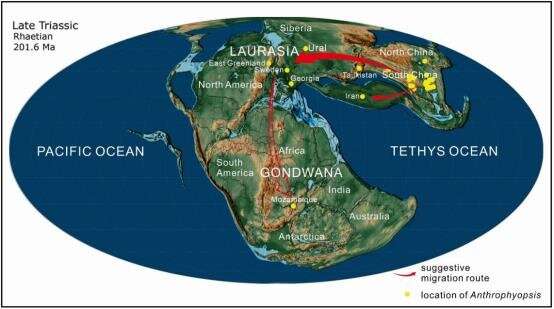New anthrophyopsis fossil material discovered in Sichuan Basin, China

Anthrophyopsis Nathorst is an extinct but representative Late Triassic gymnosperm genus. However, the taxonomic statuses and the leaf morphological variation of this fossil plant remain unclear.
Recently, an international research team led by Prof. Wang Yongdong from the Nanjing Institute of Geology and Paleontology of the Chinese Academy of Science (NIGPAS) discovered several well-preserved fossil material belonging to Anthrophyopsis from the Upper Triassic Xujiahe Formation in Guangyuan City of northern Sichuan Basin, China.
Their findings were published in Review of Palaeobotany and Palynology.
Prof. Mihai E. Popa from University of Bucharest of Romania and Prof. Zhang Tingshan's team from Southwest Petroleum University of China were also involved as key members in the study.
The researchers conducted a comprehensive systematic study of Anthrophyopsis and investigated the significance of its tempo-spatial distribution pattern.
"The newly collected specimens show various outlines with depths of incision for different leaves, pointing to transitional shapes between entire and lobed margins," said Prof. Wang. This enabled a detailed and updated morphological diagnosis emendation of this fossil at genus and species level.
-

Fig. 2 Anthrophyopsis crassinervis from Guangyuan area of northern Sichuan Basin, South China, showing thick midrib with secondary vein meshes and leaf margin with deep incisions. Credit: NIGPAS -

Fig. 3 Morphological reconstructions of Anthrophyopsis crassinervis, showing heteromorphic leaf morphologies. Credit: NIGPAS -

Fig. 4 Palaeogeographic map showing the distribution of genus Anthrophyopsis around the world during the Late Triassic and its suggested migration routes. Credit: NIGPAS
Then, the researchers conducted a new reconstruction of its type species Anthrophyopsis crassinervis with emphasis on its heteromorphic leaf morphologies.
The re-investigation on the global fossil record shows that among 16 species of Anthrophyopsis documented worldwide, only three of them are valid species, other four species need further revision, and nine species are invalid.
In addition, the researchers found that Anthrophyopsis has a short stratigraphic range and confined to Upper Triassic sequences, from the Carnian to the Rhaetian in age. Anthrophyopsis possibly originated from the South China Block during the Carnian, migrated along the northern frame of the Tethys realm, and finally arrived in Middle East and Europe.
"The short stratigraphic range of Anthrophyopsis in the Southern Floristic Province (SFP) implies a climate differentiation between the SFP and the Northern Floristic Province during the Late Triassic," said Prof. Wang.
More information: Yuanyuan Xu et al, Re-appraisal of Anthrophyopsis (Gymnospermae): New material from China and global fossil records, Review of Palaeobotany and Palynology (2021). DOI: 10.1016/j.revpalbo.2021.104475
Provided by Chinese Academy of Sciences





















